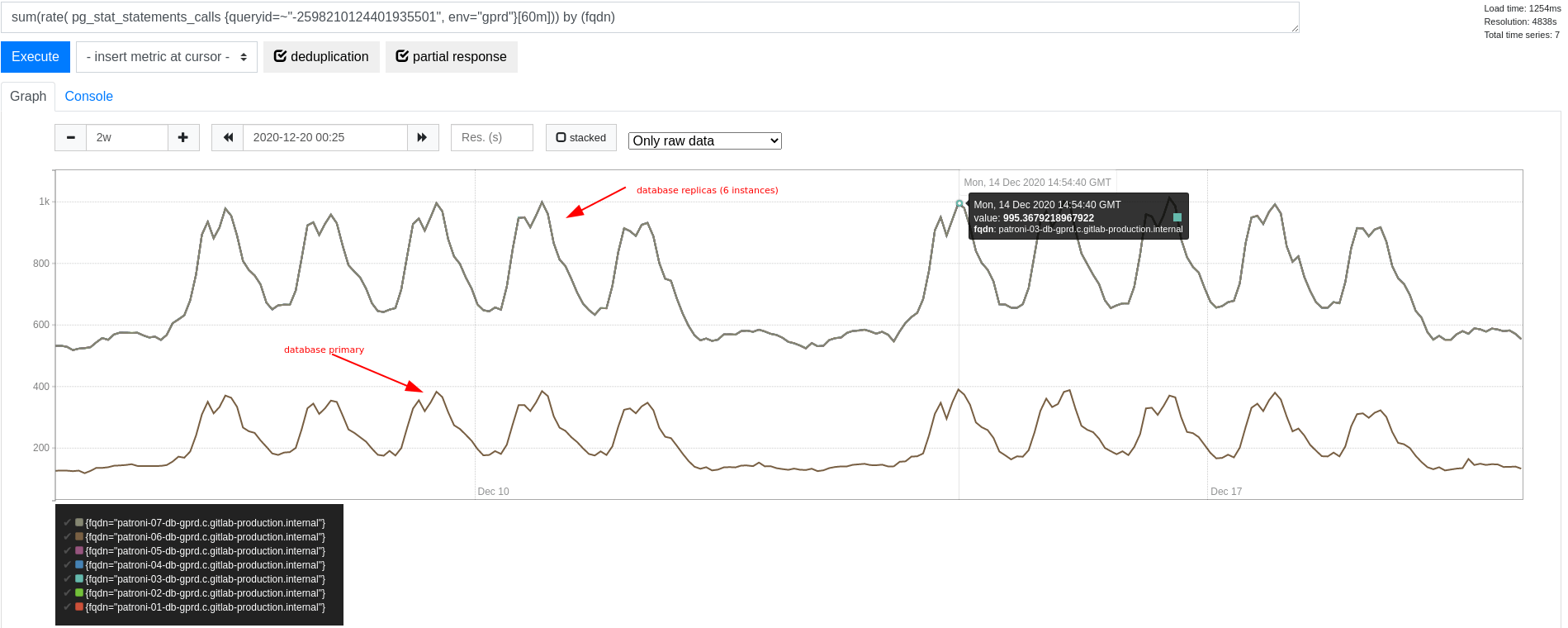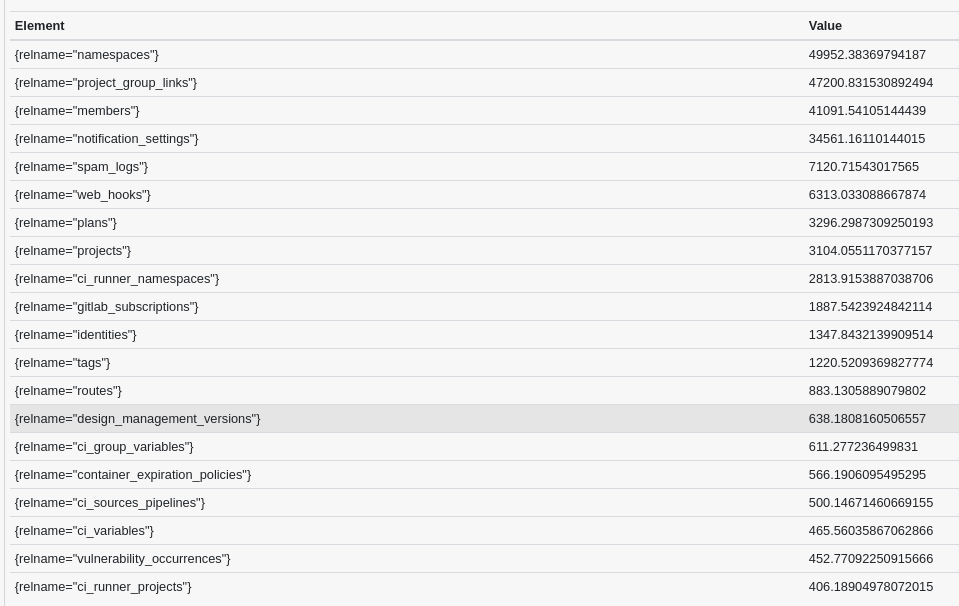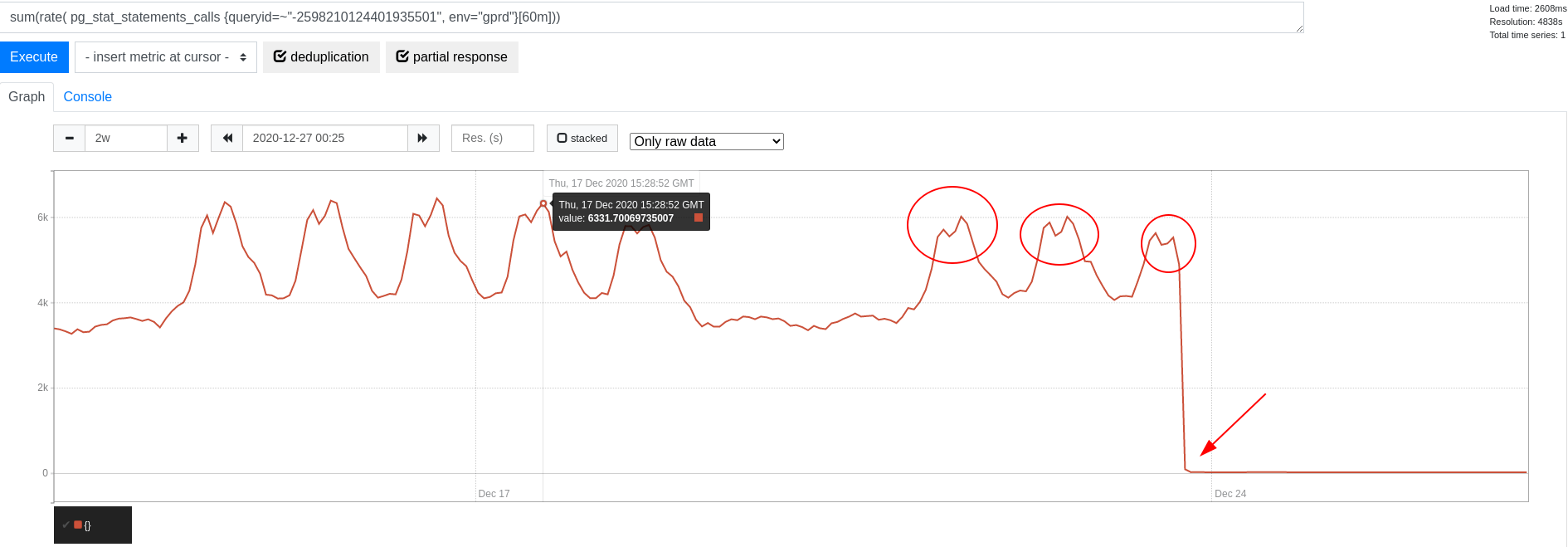| Status | Authors | Coach | DRIs | Owning Stage | Created |
|---|---|---|---|---|---|
| proposed | - |
- Characteristics of read-mostly data
- How to recognize read-mostly data
- Best practices for handling read-mostly data at scale
Read-mostly data
This document describes the read-mostly pattern introduced in the Database Scalability Working Group. We discuss the characteristics of read-mostly data and propose best practices for GitLab development to consider in this context.
Characteristics of read-mostly data
As the name already suggests, read-mostly data is about data that is much more often read than updated. Writing this data through updates, inserts, or deletes is a very rare event compared to reading this data.
In addition, read-mostly data in this context is typically a small dataset. We explicitly don’t deal with large datasets here, even though they often have a “write once, read often” characteristic, too.
Example: license data
Let’s introduce a canonical example: license data in GitLab. A GitLab instance may have a license
attached to use GitLab enterprise features. This license data is held instance-wide, that
is, there typically only exist a few relevant records. This information is kept in a table
licenses which is very small.
We consider this read-mostly data, because it follows above outlined characteristics:
- Rare writes: license data very rarely sees any writes after having inserted the license.
- Frequent reads: license data is read extremely often to check if enterprise features can be used.
- Small size: this dataset is very small. On GitLab.com we have 5 records at < 50 kB total relation size.
Effects of read-mostly data at scale
Given this dataset is small and read very often, we can expect data to nearly always reside in database caches and/or database disk caches. Thus, the concern with read-mostly data is typically not around database I/O overhead, because we typically don’t read data from disk anyway.
However, considering the high frequency reads, this has potential to incur overhead in terms of database CPU load and database context switches. Additionally, those high frequency queries go through the whole database stack. They also cause overhead on the database connection multiplexing components and load balancers. Also, the application spends cycles in preparing and sending queries to retrieve the data, deserialize the results and allocate new objects to represent the information gathered - all in a high frequency fashion.
In the example of license data above, the query to read license data was identified to stand out in terms of query frequency. In fact, we were seeing around 6,000 queries per second (QPS) on the cluster during peak times. With the cluster size at that time, we were seeing about 1,000 QPS on each replica, and fewer than 400 QPS on the primary at peak times. The difference is explained by our database load balancing for scaling reads, which favors replicas for pure read-only transactions.
The overall transaction throughput on the database primary at the time varied between 50,000 and 70,000 transactions per second (TPS). In comparison, this query frequency only takes a small portion of the overall query frequency. However, we do expect this to still have considerable overhead in terms of context switches. It is worth removing this overhead, if we can.
How to recognize read-mostly data
It can be difficult to recognize read-mostly data, even though there are clear cases like in our example.
One approach is to look at the read/write ratio and statistics from, for example, the primary. Here, we look at the TOP20 tables by their read/write ratio over 60 minutes (taken in a peak traffic time):
bottomk(20,
avg by (relname, fqdn) (
(
rate(pg_stat_user_tables_seq_tup_read{env="gprd"}[1h])
+
rate(pg_stat_user_tables_idx_tup_fetch{env="gprd"}[1h])
) /
(
rate(pg_stat_user_tables_seq_tup_read{env="gprd"}[1h])
+ rate(pg_stat_user_tables_idx_tup_fetch{env="gprd"}[1h])
+ rate(pg_stat_user_tables_n_tup_ins{env="gprd"}[1h])
+ rate(pg_stat_user_tables_n_tup_upd{env="gprd"}[1h])
+ rate(pg_stat_user_tables_n_tup_del{env="gprd"}[1h])
)
) and on (fqdn) (pg_replication_is_replica == 0)
)
This yields a good impression of which tables are much more often read than written (on the database primary):
From here, we can zoom into for example gitlab_subscriptions and realize that index reads peak at above 10k tuples per second overall (there are no seq scans):
We very rarely write to the table (there are no seq scans):
Additionally, the table is only 400 MB in size - so this may be another candidate we may want to consider in this pattern (see #327483).
Best practices for handling read-mostly data at scale
Cache read-mostly data
To reduce the database overhead, we implement a cache for the data and thus significantly reduce the query frequency on the database side. There are different scopes for caching available:
-
RequestStore: per-request in-memory cache (based onrequest_storegem) -
ProcessMemoryCache: per-process in-memory cache (aActiveSupport::Cache::MemoryStore) -
Gitlab::Redis::CacheandRails.cache: full-blown cache in Redis
Continuing the above example, we had a RequestStore in place to cache license information on a
per-request basis. However, that still leads to one query per request. When we started to cache license information
using a process-wide in-memory cache
for 1 second, query frequency dramatically dropped:
The choice of caching here highly depends on the characteristics of data in question. A very small dataset like license data that is nearly never updated is a good candidate for in-memory caching. A per-process cache is favorable here, because this unties the cache refresh rate from the incoming request rate.
A caveat here is that our Redis setup is currently not using Redis secondaries and we rely on a single node for caching. That is, we need to strike a balance to avoid Redis falling over due to increased pressure. In comparison, reading data from PostgreSQL replicas can be distributed across several read-only replicas. Even though a query to the database might be more expensive, the load is balanced across more nodes.
Read read-mostly data from replica
With or without caching implemented, we also must make sure to read data from database replicas if we can. This supports our efforts to scale reads across many database replicas and removes unnecessary workload from the database primary.
GitLab database load balancing for reads sticks to the primary after a first write or when opening an explicit transaction. In the context of read-mostly data, we strive to read this data outside of a transaction scope and before doing any writes. This is often possible given that this data is only seldom updated (and thus we’re often not concerned with reading slightly stale data, for example). However, it can be non-obvious that this query cannot be sent to a replica because of a previous write or transaction. Hence, when we encounter read-mostly data, it is a good practice to check the wider context and make sure this data can be read from a replica.




